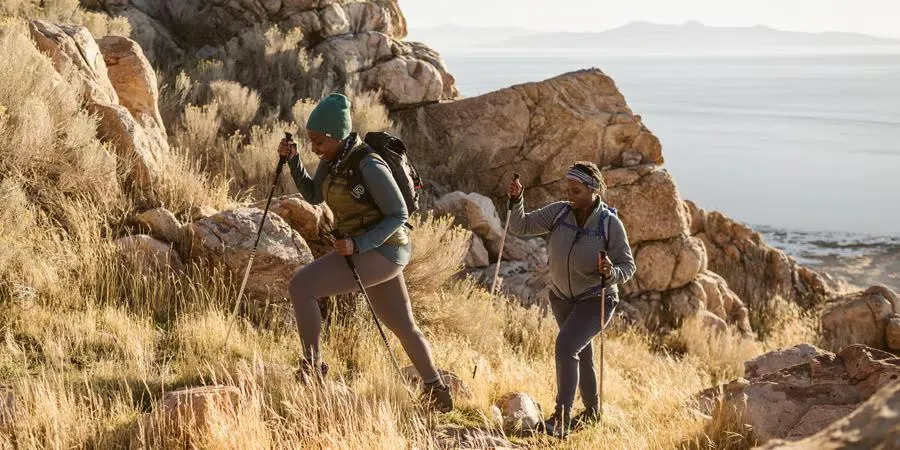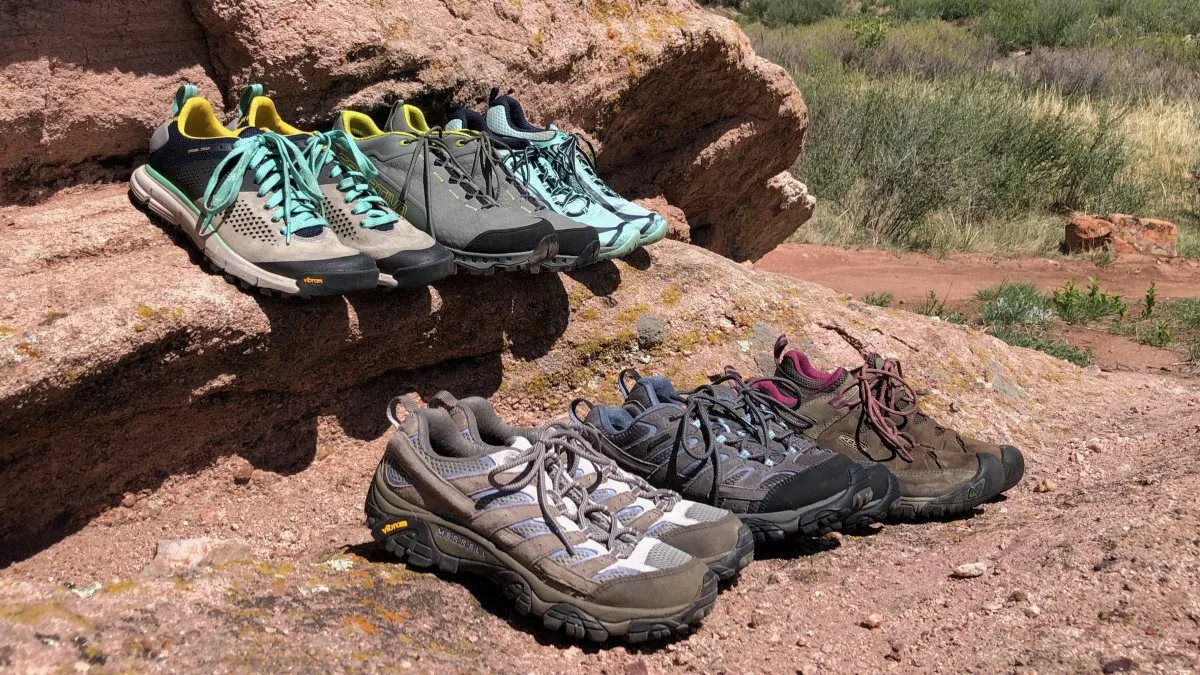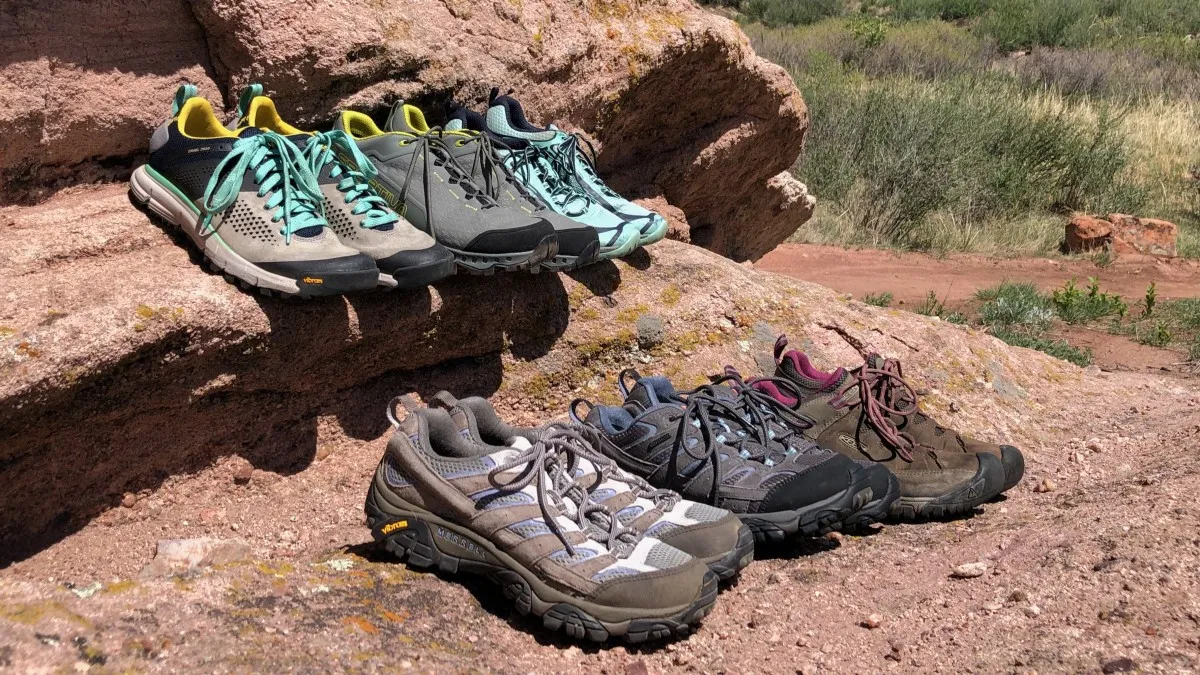As someone who has spent over a decade exploring trails across North America, from the rugged peaks of the Rocky Mountains to the gentle coastal paths of California, I understand that learning how to start hiking can feel overwhelming. This comprehensive guide, based on my personal experience and insights from Nature Guests, will equip you with everything you need to confidently take your first steps on the trail. Whether you're seeking fitness, mental clarity, or simply a connection with nature, this guide will transform you from a hiking novice into a confident trail explorer.
Understanding the Basics - What is Hiking and Why Start?
When people ask me how to start hiking, I always begin by explaining what hiking truly means. Hiking is simply walking in natural environments, typically on trails or paths through forests, mountains, deserts, or coastal areas. Unlike casual walking, hiking often involves varied terrain, elevation changes, and longer distances that challenge both your body and mind.
I remember my first hiking experience in the Appalachian Mountains of Virginia. What started as a simple 2-mile walk turned into a transformative journey that sparked my lifelong passion for the outdoors. The physical challenge, mental clarity, and connection with nature were unlike anything I had experienced in urban environments.
The beauty of learning how to start hiking lies in its accessibility. Unlike many outdoor activities that require expensive equipment or specialized training, hiking can begin with basic gear you likely already own. It's an activity that welcomes people of all fitness levels, ages, and backgrounds.

Why I Recommend Starting Your Hiking Journey
Through my years of guiding beginners on hiking for beginners adventures, I've witnessed countless transformations. Hiking offers unique benefits that extend far beyond physical exercise:
- Mental Health Benefits: Regular hiking reduces stress, anxiety, and depression while improving mood and cognitive function
- Physical Fitness: Builds cardiovascular endurance, strengthens leg muscles, and improves balance
- Nature Connection: Develops environmental awareness and appreciation for natural conservation
- Social Opportunities: Creates lasting friendships through shared outdoor experiences
- Personal Achievement: Builds confidence through overcoming physical and mental challenges
Assessing Your Fitness and Choosing Your First Trail
One of the most crucial aspects of understanding how to start hiking is honestly assessing your current fitness level and selecting appropriate trails. I've seen too many beginners attempt challenging hikes unprepared, leading to exhaustion, injury, or discouragement from continuing their hiking journey.
Evaluating Your Current Fitness Level
Before selecting your first trail, perform this simple self-assessment I use with all my hiking groups:
- Can you walk continuously for 30 minutes without significant fatigue?
- Do you exercise regularly (2-3 times per week)?
- Can you climb two flights of stairs without being winded?
- Do you have any injuries or medical conditions that limit physical activity?
Your honest answers will guide your trail selection. Remember, hiking fitness develops gradually, and starting conservatively allows you to build strength and confidence safely.
Selecting Your First Trail
When teaching people how to start hiking, I always recommend following the "10% rule" - increase your hiking distance and difficulty by no more than 10% each week. For absolute beginners, start with trails that meet these criteria:
- Distance: 2-4 miles total (round trip)
- Elevation Gain: Less than 500 feet
- Trail Type: Well-maintained and clearly marked
- Traffic Level: Moderate to high (for safety and assistance if needed)
- Location: Within 1 hour of your home for easy access
I particularly recommend starting with our curated selection of easy hiking trails in the US, which feature beginner-friendly options across all regions.
Pro Tip from My Experience: Always research trail conditions before departing. Weather, seasonal changes, and recent maintenance can significantly impact trail difficulty. I check local ranger stations or recent hiker reviews on AllTrails before every trip.
Essential Hiking Gear for Beginners
One common misconception about how to start hiking is that you need expensive, specialized equipment immediately. After years of testing gear across diverse terrains and weather conditions, I can assure you that starting simple is often the best approach.
The gear recommendations I share come from personal experience and feedback from hundreds of hikers I've guided. I focus on versatile, reliable items that will serve you well as your hiking skills develop.
.webp)
Footwear: Your Foundation for Success
Proper footwear is absolutely critical when learning how to start hiking. I've seen more hikes ruined by inappropriate shoes than any other gear mistake. Your feet are your primary connection to the trail, and comfort here determines your entire experience.
My Top Footwear Recommendation

For most beginners, I recommend the Merrell Moab 3 Hiking Boots. After testing these extensively on trails ranging from the Pacific Northwest to the Southeast, they offer the perfect balance of support, comfort, and durability.
Get Merrell Moab 3 Boots on AmazonBackpack: Carrying Your Essentials Comfortably
A quality daypack is essential for learning how to start hiking safely. Your backpack should distribute weight evenly, provide easy access to essentials, and remain comfortable throughout your entire hike.
Recommended Beginner Backpack
The Osprey Daylite Pack has been my go-to recommendation for beginners for over five years. Its 13-liter capacity is perfect for day hikes, and the build quality ensures it will last through many adventures.
Get Osprey Daylite Pack on AmazonNavigation and Safety Equipment
Safety equipment is non-negotiable when understanding how to start hiking. Even on well-marked trails, conditions can change rapidly, and being prepared can prevent minor inconveniences from becoming serious problems.
Trekking Poles
After using various brands across challenging terrain, I recommend the Black Diamond Trail Sport Trekking Poles for their reliability and comfort.
Get Trekking PolesHeadlamp
The Black Diamond Spot 350 Headlamp provides reliable illumination for early morning starts or unexpected delays on the trail.
Get HeadlampFor a comprehensive gear breakdown, including seasonal considerations and budget alternatives, visit our detailed hiking checklist for beginners.
Planning and Preparing for Your First Hike
Proper planning is where learning how to start hiking transitions from theory to practice. The difference between a memorable adventure and a miserable experience often lies in the preparation work done before leaving home.
Pre-Hike Research and Route Planning
Every successful hike begins with thorough research. I spend at least 30 minutes researching each new trail, even short day hikes. This preparation has prevented countless problems and enhanced my enjoyment of every outdoor adventure.
My Essential Pre-Hike Checklist:
- Check weather forecast for trail location (not just your departure point)
- Verify trail conditions and recent closure reports
- Download offline maps and GPS coordinates
- Inform someone of your planned route and return time
- Check parking availability and fees
- Verify permit requirements
- Plan alternate routes in case of trail closures
Nutrition and Hydration Strategy
Understanding proper nutrition and hydration is crucial when learning how to start hiking. Dehydration and energy depletion are the leading causes of hiking fatigue and poor decision-making on the trail.
Through experience hiking in diverse climates, from the humid Southeast to the arid Southwest, I've developed these hydration guidelines:
- Water Volume: 16-24 oz per hour of hiking in moderate conditions
- Electrolyte Replacement: Essential for hikes longer than 2 hours or in hot weather
- Pre-Hydration: Begin hydrating 24 hours before your hike
- Snack Strategy: Consume 100-200 calories per hour of complex carbohydrates and protein
For detailed nutrition planning specific to different trail conditions, explore our comprehensive beginner hiking tips resource.
Safety Tips and Trail Etiquette
Safety consciousness and proper trail etiquette are fundamental aspects of learning how to start hiking responsibly. These principles protect both you and the natural environments we're privileged to explore.
Leave No Trace Principles
As someone who has witnessed the impact of increased trail usage firsthand, I cannot overemphasize the importance of Leave No Trace principles. These guidelines ensure that the trails we love today will remain pristine for future generations.
Plan Ahead and Prepare
Research regulations, weather conditions, and hazards. Prepare for extreme weather, hazards, and emergencies.
Travel on Durable Surfaces
Stay on designated trails and campsites. Avoid shortcuts and don't create new trails.
Dispose of Waste Properly
Pack out all trash, including food scraps. Use established restrooms or follow proper waste disposal techniques.
Wildlife Safety and Encounters
Understanding wildlife behavior and appropriate responses is essential when learning how to start hiking in different ecosystems. I've encountered everything from curious deer to protective bears, and proper preparation is key to safe wildlife viewing.
Wildlife Encounter Guidelines
- Maintain a minimum distance of 25 yards from most wildlife, 100 yards from bears and wolves
- Make noise while hiking to avoid surprising animals
- Never feed wildlife - it's dangerous for both animals and humans
- If you encounter a bear, do not run - back away slowly while facing the animal
- Carry bear spray in bear country and know how to use it
Trail Etiquette and Right-of-Way
Proper trail etiquette ensures that everyone can enjoy their outdoor experience safely and peacefully. These unwritten rules of the trail have developed over decades of shared use and mutual respect.
- Uphill Traffic Has Right-of-Way: Hikers going uphill have the right-of-way as they maintain momentum and rhythm
- Yield to Horses: Step off the trail and speak calmly to let horses know you're human
- Mountain Bikers Yield to Hikers: Though courtesy often dictates stepping aside for faster-moving bikers
- Keep Noise Levels Low: Respect others seeking tranquility in nature
- Control Your Pets: Keep dogs on leash and under control at all times
Building Your Hiking Skills and Confidence
Once you understand the basics of how to start hiking, the journey of skill development and confidence building truly begins. I've guided hundreds of beginners through this progression, and the transformation is always remarkable.
Progressive Training and Skill Development
Building hiking endurance and technical skills requires a systematic approach. I recommend following a progressive training schedule that gradually increases both physical demands and technical complexity.
8-Week Beginner Progression Plan
Weeks 1-2: Foundation
2-3 mile hikes, elevation gain under 300 feet, focus on gear familiarity
Weeks 3-4: Building
4-5 mile hikes, elevation gain 500-800 feet, introduce navigation skills
Weeks 5-6: Advancing
6-8 mile hikes, elevation gain 1000+ feet, weather challenges
Weeks 7-8: Mastery
8+ mile hikes, varied terrain, confidence in decision-making
Navigation and Risk Management
Advanced aspects of how to start hiking include developing navigation skills and risk assessment abilities. These skills transform you from a trail follower into a confident outdoor adventurer.
During my early hiking years in the Blue Ridge Mountains, I learned the hard way that basic navigation skills are essential, even on marked trails. Weather can obscure markers, and wrong turns can add hours to your planned return time.
- Map and Compass Skills: Learn basic triangulation and bearing techniques
- GPS Technology: Understand limitations and backup systems
- Weather Assessment: Recognize dangerous weather patterns and escape routes
- Risk Evaluation: Develop decision-making frameworks for challenging situations
- Emergency Protocols: Know when and how to call for help
Joining the Hiking Community
One of the most rewarding aspects of learning how to start hiking is connecting with the broader outdoor community. This network provides ongoing learning opportunities, safety partners, and lifelong friendships.
I encourage all beginners to connect with local hiking groups, online communities, and conservation organizations. The shared knowledge and camaraderie enhance both safety and enjoyment of your outdoor adventures.
Conclusion
Learning how to start hiking is more than acquiring new skills - it's embarking on a journey that will enrich your physical health, mental well-being, and connection with the natural world. Through my years of guiding beginners and exploring diverse trail systems across North America, I've witnessed countless transformations that began with a single step on a simple trail.
The comprehensive approach outlined in this guide - from honest fitness assessment and proper gear selection to safety protocols and skill development - provides the foundation for a lifetime of outdoor adventures. Remember that every experienced hiker began as a beginner, and the learning process never truly ends.
Your Next Steps
- Choose your first trail using the selection criteria discussed
- Invest in proper footwear and basic safety equipment
- Start with short, manageable hikes and gradually increase difficulty
- Connect with local hiking communities for support and companionship
- Always prioritize safety and environmental responsibility
The trails are waiting, and your adventure begins with understanding how to start hiking safely and confidently. Whether you're seeking solitude in nature, physical challenge, or simply a new way to explore the world around you, hiking offers rewards that extend far beyond the trail itself.
As you take your first steps into the hiking community, remember that nature is both powerful and fragile. Our responsibility as outdoor enthusiasts extends beyond personal enjoyment to active stewardship of these precious spaces for future generations.
Ready to Begin Your Hiking Journey?
Join thousands of successful hikers who started their outdoor adventures with Nature Guests. Your trail awaits!
Start Your Adventure Today

